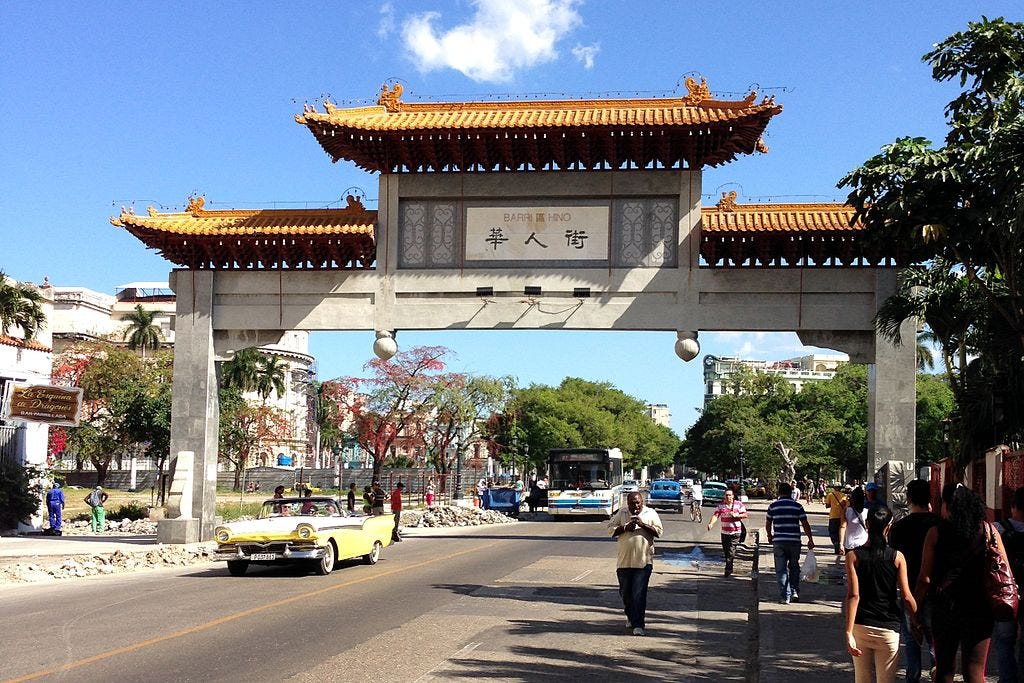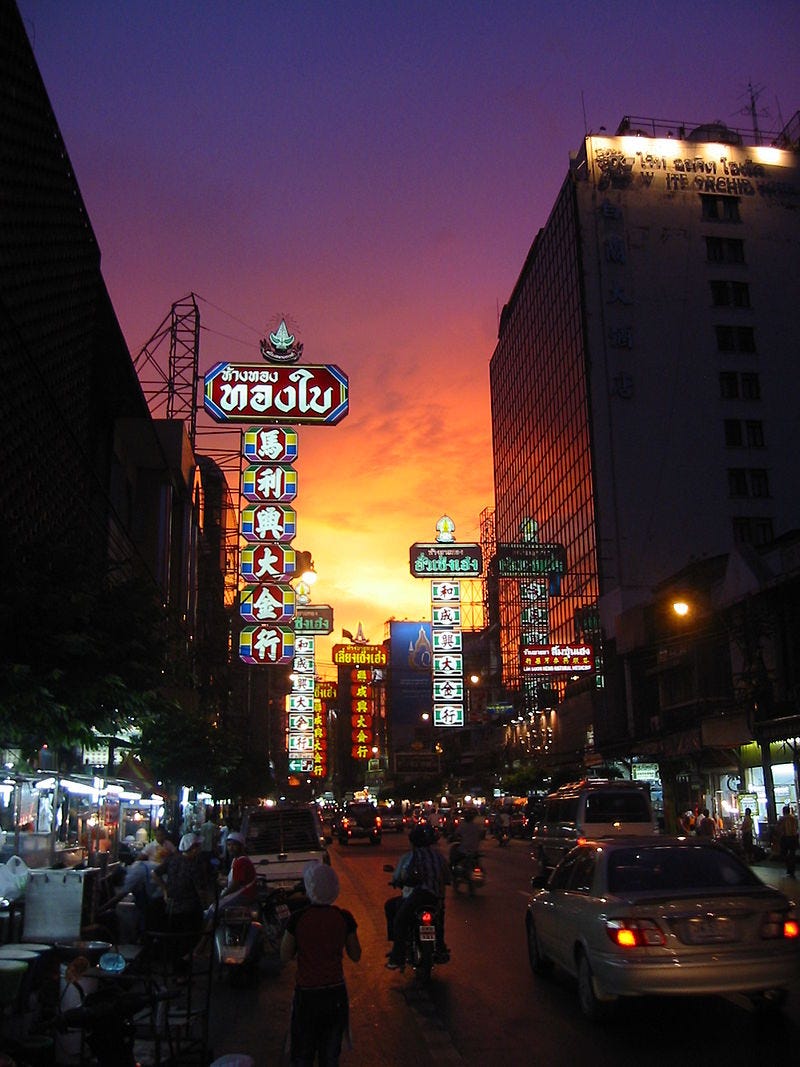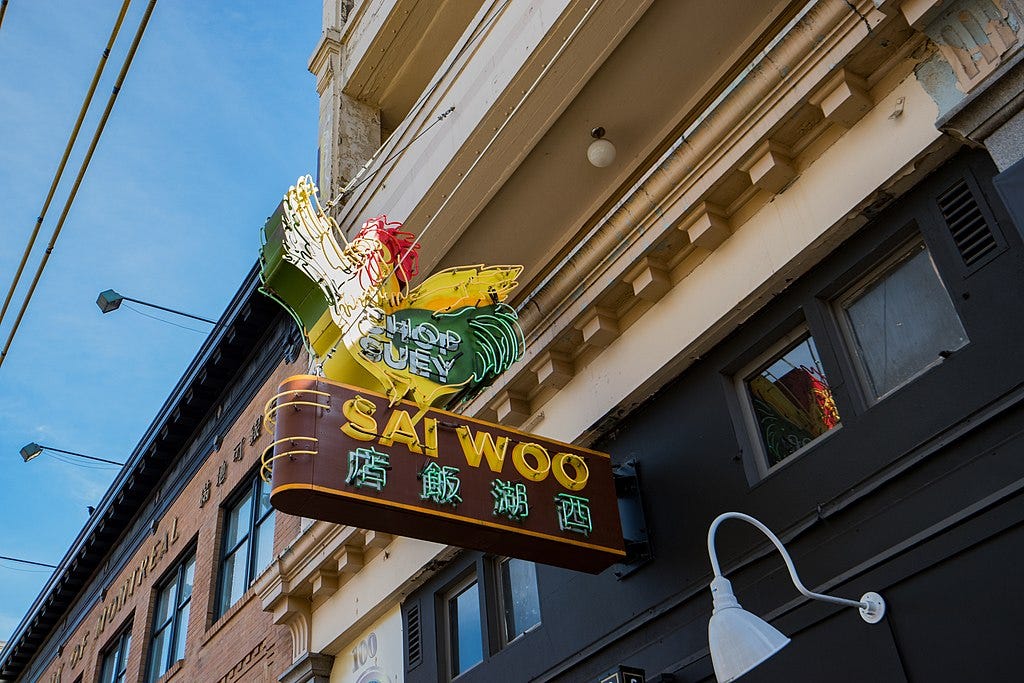Forget it, Jake, it's Chinatown
From Cuba to Canada, the global Chinese diaspora knows no bounds. Here, a look at some of the world's best Chinatowns – and what you might find when you get there
Okay, so this isn’t a story about the classic 1974 movie that starred Jack Nicholson and Faye Dunaway (though wouldn’t that be a fun thing to write). Rather, it’s a celebration of some of the world’s most famous and exotic Chinatowns. Growing up, it was joked that Hong Kong was the most prominent holder of that title, but that aside was quietly dropped after the 1997 handover and the end of British rule. Traditionally though, the moniker was given to a neighborhood in a city outside of greater China that attracted Chinese immigrants. Naturally congregating together (often in clans or by dialect) for safety and familiarity, these gradually became centers of commerce, and, in modern times, tourist attractions. I delve the globe for a sampling of these colorful enclaves.
CARRIBEAN
Barrio Chino, Havana, Cuba
Hola amigo, lei hao ma? Welcome to Barrio Chino, where the locals embrace their blended Spanish and Chinese heritage. Once Latin America's largest Chinatown, it began when coolies were brought in from Guangdong in the 1840s to work on the sugar plantations. A few decades later, Los Californianos arrived – a group of more than 5,000 escaping racism and bigotry in the United States – then finally in the early 20th century, a third wave of migrants fleeing social upheaval in China. At its height, the Chinese population numbered some 50,000 and covered 44 square blocks, with the laundries, small factories, and restaurants you can find in Chinatowns worldwide. But the end came with Che and Castro's 1959 revolution, the collapse of private enterprise, and emigration – many, ironically, back to the US. With only some 150 native Cuban-Chinese left, thank goodness, then, for the altruistic intentions of the P.R.C., which has paid to spruce up Chinatown, including building a huge new archway. Several thousand mainland Chinese students now come here yearly to study Spanish, though what they make of the 'chop suey' on menus is anyone's guess. Como esta pengyou?
ASIA
Tiretta Bazaar, Kolkata, India
Caught between the two rising superpowers of China and India are a tiny, almost forgotten, third party: the Chinese of India. Just like tens of thousands of others who fled early 19th century war and famine in their homeland, the Chinese – predominately from South China – also found their way to former Calcutta, back then the capital of British India. According to current estimates, there are only about 5,000 to 10,000 Indian-Chinese still living in Kolkata, with numbers having steadily decreased since the Sino-India war of 1962, when many emigrated to Western countries. Paradoxically, there is a large Indian-Chinese community in the Canadian city of Toronto, where Chinese supermarkets sell tandoori chicken, and the latest Hindi songs are performed at weddings. For now at least though, you can still find Taoist temples, markets where dim sum is sold from bamboo baskets, and even a spic and span Chinese goods store run by the charming Stella, who totes up your bill on an abacus, and likes aloo loochi, a local potato and bread snack, as much as the Kolkatan chow mien that can be found on almost any street corner – indeed, Chinese food is the most popular cuisine in Kolkata.
Yaowarat Road, Bangkok, Thailand
At night, Bangkok’s Chinatown resembles 1960s Hong Kong; a relatively low-rise neighbourhood of bustling back alley markets, steaming street food, gleaming gold shops, all backlit by the glow of neon signs in Chinese and Thai. It has been this way for some 200 years, since the capital’s Chinese community moved here from where the Grand Palace is now located. While the most fun to be had here is walking around and soaking up the atmosphere, the main attraction is without doubt the food. One of the easiest ways to enjoy it is to sign up for a walkabout with one of the many cuisine-focused tours, which take you to a slew of famous local eateries that cover everything from street food to fine dining. In between eating, you meet lively characters, hear famous stories, and visit local cultural landmarks, such as the Golden Buddha at Wat Traimit. The world’s largest solid gold statue was made in the 13th century, before being quickly covered with a plaster facade to keep it out of the hands of Burmese invaders in the 1760s. Remarkably, the five ton treasure was only rediscovered in 1955, when movers accidentally dropped the statue, revealing the gleaming Buddha within.
Binondo, Manila, Philippines
Welcome to supposedly the world’s oldest Chinatown. Binondo was established in the 1590s by the Spanish, as a settlement for Catholic Chinese. Built in 1596, the landmark Binondo Church is home to the Santo Cristo de Longos or Crucified Christ, believed to be miraculous. In the late 16th century, a mute-deaf Chinese supposedly regained the power of speech after finding the image. Located across the river from their walled city of Intramuros, the enclave was positioned so the colonial rulers could keep a close eye on their migrant subjects. Although almost 20,000 Chinese were killed following a revolt in 1603, Hokkiens continued to flock here from Fujian, and today Binondo is an integral, thriving part of the Filipino capital. Your first indication that you’ve arrived in ‘Chi Lai’ (inner city in Hokkien) is the Chinese Goodwill Arch. Beyond that, you’ll discover a vibrant mix of restaurants, temples, shops, and restaurants. Start your tour on Carvajal Street, otherwise known as Umbrella Alley (so-called for the multitude of umbrellas that protect the small street stalls), which offers some of the best street food in the city, including local culinary treats such as bull testicle soup (I’m not kidding).
AFRICA
Cyrildene, Johannesburg, South Africa
South Africa is home to the biggest ethnic Chinese community on the continent, most living in the country's largest city, Johannesburg. Migrants came here in waves from the 19th century onwards, to work in the gold mines of the then Transvaal. Uniquely, the city is actually home to two Chinatowns. The first is located downtown along historic Commissioner Street: once a thriving community of shops, community centers and restaurants, many residents emigrated in the 1990s, forced out by the rising crime in the CBD. In its place, however, has emerged New Chinatown in the eastern Jo'burg suburb of Cyrildene. Here, on Derrick Avenue, you'll find restaurants, supermarkets, massage parlours, grocery stores, butchers and fishmongers, many run by more recent Mandarin-speaking immigrants. Because of the diverse nature of the Chinese, cuisines served range from Shanghainese to Sichuan. For instance, the Fisherman’s Plate is well known for its sticky pork ribs, spicy prawns, chicken with cashew nuts and ginger crab, while inexpensive Shanghai Restaurant is famous for its soups and dumplings.
AUSTRALIA
Little Bourke Street, Melbourne, Australia
Like in South Africa, it was the lure of quick fortunes that drew young man to venture from South China to the Australian state of Victoria. Beginning in 1851, ships laden with gold diggers sailed from Hong Kong bound for Melbourne. As more and more arrived, a small, vibrant Chinese community set up shop in Little Bourke Street to cater to the needs of the new arrivals, supplying them with accommodation, food and equipment. This boom time continued until the introduction of the 'White Australia rule in 1901, when the Chinese, like many non-European immigrants, suffered under a racist immigration policy. After it was relaxed after WWII, the area was reinvigorated. Today, its historic brick buildings remain home to Cantonese restaurants, groceries, herbal medicine shops, and a interesting museum detailing the community's history. According to the city’s Chinatown Precinct Association, the guardians of the district, Melbourne's Chinatown is the longest continuous Chinese settlement in the western world – it's also one of the most cosmopolitan, with Thai, Malaysian, Vietnamese, Japanese, and even 'Australian' cuisine available, so meat pies and Vegemite then?
NORTH AMERICA
Grant Avenue, San Francisco, United States
San Francisco lays claim to being home to the world's oldest Chinatown in the West, following the arrival in 1848 of three Chinese immigrants, two men and one woman. Like in Australia they had to fight ongoing racial prejudice, with the 1882 Chinese Exclusion Act that prohibited Chinese from becoming naturalised American citizens. They were also not allowed to own property, vote, have their families join them, or even marry non-Chinese. However, after more than 150 years in San Francisco, they are an integral part of the rich fabric of this west coast American city, with Chinatown now the city's number one attraction, drawing more people each year than even the Golden Gate Bridge. Any tour of the area starts on historic Grant Avenue. In the late 1880s, as Dupont Street, it was one of the sleaziest drags in town, filled with opium dens and brothels. However, after the devastating 1906 earthquake, it was renamed after Ulysses S. Grant. While for a long time, it still remained a den of vice - as Jack Nicholson discovered to his detriment way back in the ‘70s - you'll now find dragon-entwined lamp posts, bilingual street signs, and traditional Chinese medicine stores.
Pender Street, Vancouver, Canada
It was ironically the British that helped create one of North America's most Asian cities. Following the signing of the Joint Declaration in 1984 between Margaret Thatcher and Deng Xiaoping, which promised the return of Hong Kong to Mainland China in 1997, droves of well-educated Hong Kong Chinese emigrated to Vancouver in search of a safe haven from a future of uncertainty. Following on the heels of early 20th century pioneers, they came in such numbers that the city gained the nickname Hongcouver. Today, ethnic Chinese can be found living in every part of Vancouver (Richmond, modern-day Chinatown, is 50 per cent Chinese), you can dine out on as many varieties of Chinese food as you can find in Hong Kong, a former white mayor spoke Cantonese, and one in three of the city’s residents is of Asian descent. In recent years though there has been a reverse brain drain, as Canadian-born Chinese have moved back to Hong Kong and China in search of better job opportunities (there are up to 300,000 Canadian passport holders in Hong Kong alone). As they have moved out, they have been replaced by a new wave of Chinese arrivals – this time from the Mainland. As one commentator puts it: “Forget Hongcouver, here comes Chinada!”
EUROPE
Gerrard Street, London, United Kingdom
Having such a long and controversial history with China (two Opium Wars, and the occupation of Hong Kong for more than 150 years) it seems only apt that the centre of London is home to Europe's largest Chinatown. Originally, Chinese sailors and traders settled in the East End in the late 18th century, but the destruction of the area during the World War 2 blitz combined with a shortage of work saw the community dwindle. However, it was saved by the return of British soldiers who had served in the Far East, and had developed a taste for Chinese food. Throughout the 1960s, thousands more Chinese arrived from Hong Kong, many opening restaurants in and around Gerrard Street, attracted by the cheap rents and short leases on offer in the salubrious area. Today, London Chinatown is nestled right in the busy centre of London, between Soho, Leicester Square, Piccadilly Circus and Covent Garden, with tourists flocking to try its Chinese restaurants and teahouses, and shop at supermarkets, and traditional Chinese medicine doctors. From being an insular, temporary community – the old saying used to be “Earn enough then head home” – London's Chinatown is now a proud part of the British capital, attracting 300,000 to celebrate Chinese New Year.
Have a favorite Chinatown I’ve missed out? Leave a comment below!














Me too! Thanks Simon
Loved reading this!